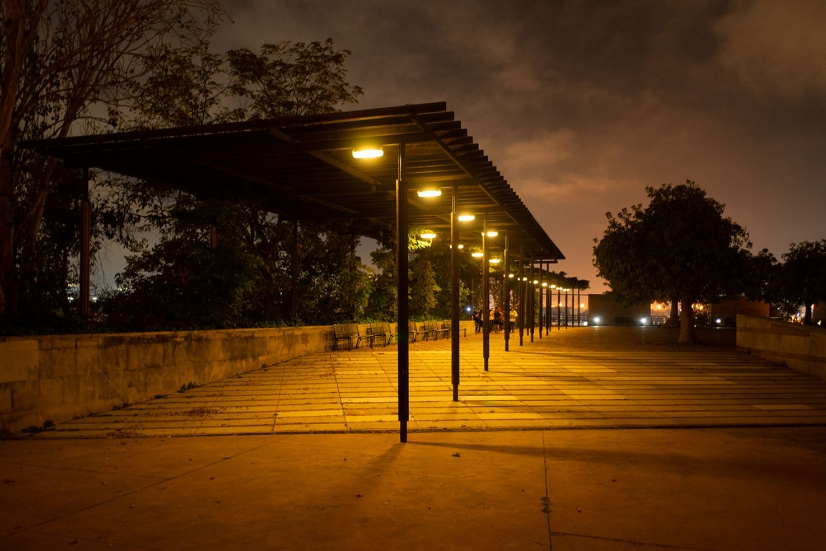
Smart lighting to minimise light pollution and protect biodiversity
This installation has set a new paradigm in the design of public lighting, as it brings together not only different colour temperatures, intensities and light levels into a single system
(Year 2023)
Kumux, a spin-off of the University of Barcelona, is involved in a smart lighting project that aims to minimise light pollution and protect biodiversity in the Molinillo Park in Santa Coloma de Gramanet. The project has been jointly carried out by the Metropolitan Area of Barcelona, the CICAT cluster, and the members of the Urban Centric Lighting working group, including Kumux.
The project consisted of installing lighting with presence sensors that adjust light intensity and colour in three areas of the park with a high number of visitors, depending on the use and occupation of the spaces.
The most cutting-edge technological innovation is the change in the emission spectrum of the luminaires, which aims to enhance public use of the park and respect the biological cycle of species and people. When no one is present, the light is bright orange, reducing the impact on biodiversity. When a person is present or the sensor detects movement or occupation, orange light turns white.
This installation has set a new paradigm in the design of public lighting, as it brings together not only different colour temperatures, intensities and light levels into a single system, but also the instantaneous and autonomous adjustment of these parameters.
According to Adrià Huguet, CTO and founder of Kumux, being able to participate in this project has been a “very good opportunity” to put the company’s expertise at the service of the public. “The idea is to minimise the impact of the human footprint on lighting installations at night. Smart cities should be promoted throughout the country; why would you want intense lighting in a street where no one is passing by? It’s a cost in terms of components, electricity, light pollution, impact on biodiversity… It makes no sense.”
Respecting biodiversity
The circadian clock is responsible for regulating the activity and rest cycles of organisms and activates vital functions of the immune system. The spectral characteristics of light have the potential to minimise the disruptive effects on the circadian rhythm in humans and other species.
“The aim is to reduce the impact on the species that live in the park or pass through the river. All the insects, mammals, and birds that live in that environment are not prepared to be exposed to artificial lighting. If we only focus on the needs of humans, all these species could be disturbed and, for example, become disoriented. It’s like what happens with a lot of streetlights at night when many insects gather around them drawn to the light,” stresses Adrià Huguet, CTO and founder of Kumux.
One of the fundamental objectives of this project is to improve environmental quality in the metropolitan area of Barcelona. This model shift will lead to a significant reduction in light pollution. The equipment is fitted with sensors that increase light levels only when necessary, that is, it adapts to people’s needs. In this way, it makes it possible to respect the biodiversity of metropolitan parks and to make public use compatible with an increase in the number of wildlife species.
In addition, the aim is to promote sustainable, efficient, healthy and technologically advanced urban lighting, boosting research (R&D) on urban outdoor lighting.

